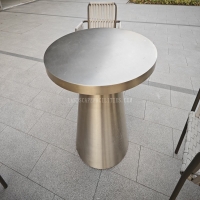Welcome to the website for landscape facilities products and knowledge.
What are the differences in acoustic dampening between materials used in landscape tables?
When selecting materials for landscape tables, acoustic dampening is a critical factor often overlooked. Different materials exhibit varying levels of sound absorption, impacting the overall ambiance of outdoor spaces.
1. Wood: Natural wood, such as teak or cedar, offers moderate acoustic dampening due to its porous structure. It absorbs mid-range frequencies well but may struggle with low-frequency sounds.
2. Metal: Metals like aluminum or steel provide minimal sound absorption, often reflecting noise rather than dampening it. This can lead to echo effects in open areas.
3. Composite Materials: Engineered composites, such as recycled plastic or fiberglass, balance durability and sound absorption. Their density and texture help scatter sound waves effectively.
4. Concrete: While heavy and dense, concrete has poor acoustic properties, often amplifying noise unless paired with sound-absorbing additives or coatings.
5. Fabric-Covered Tables: Some high-end landscape tables incorporate fabric or foam layers beneath surfaces, significantly enhancing sound dampening for quieter environments.
Understanding these differences ensures better material choices for noise-sensitive outdoor settings, from urban patios to serene garden retreats.
Related search:

Recommendation
Outdoor Metal Table - Classic Outdoor Furniture, Stainless Steel Table, Durable and Reliable